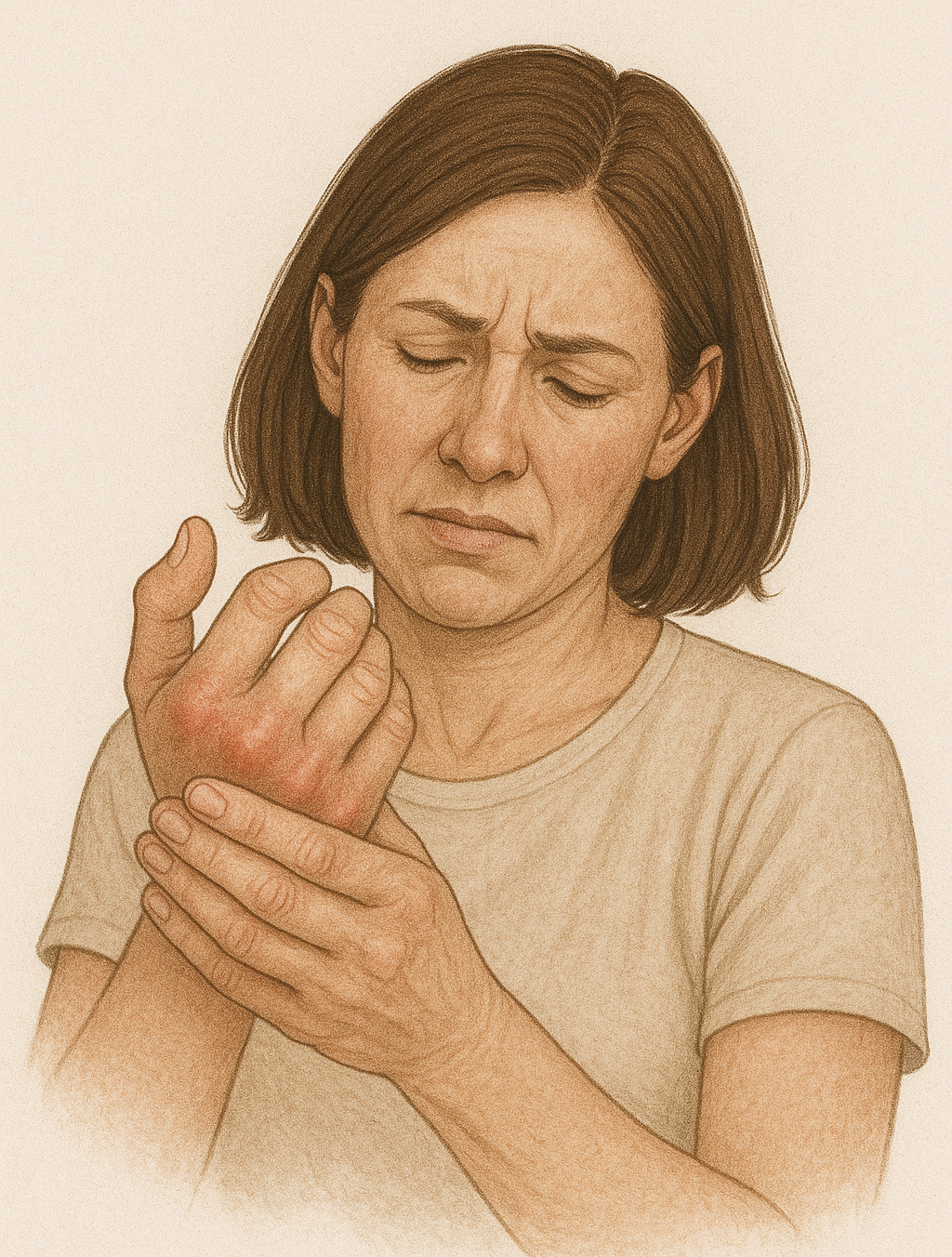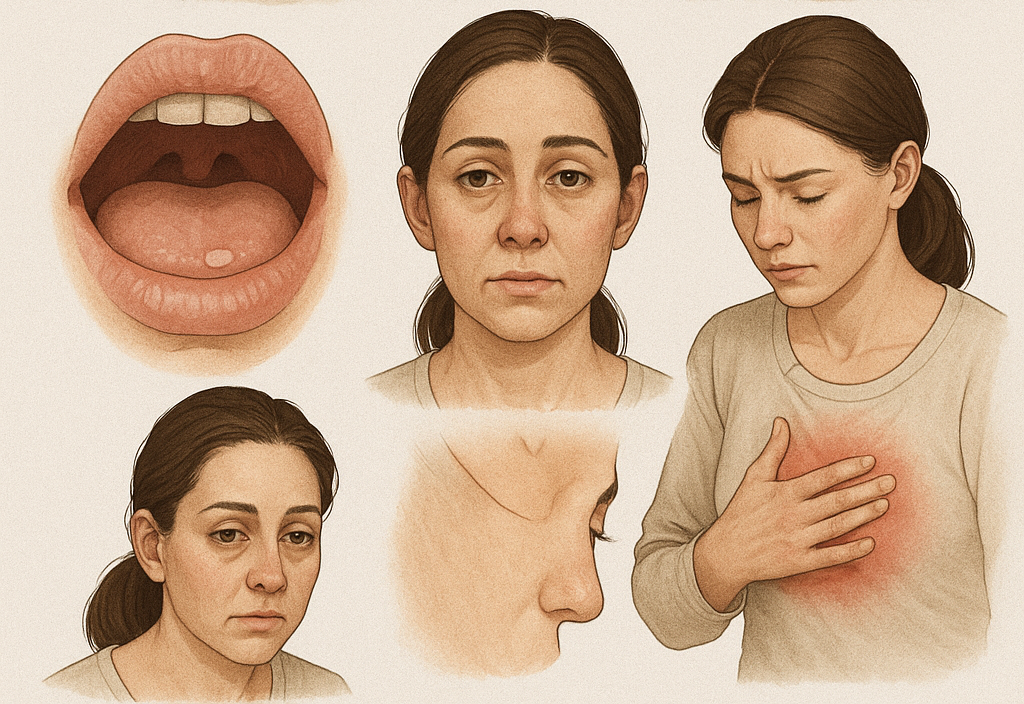Lupus is a chronic autoimmune disease in which the immune system mistakenly attacks the body’s own tissues and organs. It can affect many parts of the body, including the skin, joints, kidneys, heart, lungs, brain, and blood cells. Because lupus presents with a wide range of symptoms that often mimic other conditions, early diagnosis can be difficult. However, recognizing the early warning signs can lead to earlier medical evaluation, appropriate treatment, and better disease management.

Here are the most important early symptoms of lupus that you should be aware of:
1. Persistent Fatigue
Extreme fatigue is one of the most common and earliest signs of lupus. It is not the type of tiredness that improves with rest or sleep. Many people with lupus report feeling utterly drained even after a full night’s sleep or without having exerted themselves physically. This fatigue can interfere with daily activities and may be one of the first signs to appear before other symptoms develop.

2. Joint Pain, Swelling, and Stiffness
Lupus frequently causes inflammation in the joints, which can result in pain, swelling, and stiffness. This typically affects the small joints of the hands, wrists, and knees. The joint pain is often symmetrical, meaning it occurs on both sides of the body. While the symptoms may resemble arthritis, lupus-related joint pain tends to come and go, sometimes with no clear pattern.

3. Butterfly-Shaped Rash on the Face
A distinctive facial rash that spreads across the cheeks and the bridge of the nose—resembling the shape of a butterfly—is a hallmark symptom of lupus. This rash, known as a malar rash, often appears after sun exposure and may be accompanied by other types of skin rashes on different parts of the body.

4. Sensitivity to Sunlight (Photosensitivity)
People with lupus may develop rashes or skin reactions after even brief exposure to sunlight. These reactions can include redness, itching, or flare-ups of existing lupus symptoms. Photosensitivity is common in lupus and may contribute to the development of skin lesions or trigger more systemic symptoms.
5. Unexplained Low-Grade Fevers
Intermittent fevers that are not associated with any known infection or illness may be an early indicator of lupus. These fevers are often low-grade (around 99 to 101 degrees Fahrenheit) and may come and go without a clear reason. They are typically the result of ongoing inflammation within the body.
6. Hair Loss or Thinning Hair
Hair loss, especially along the hairline or in patches, is a frequent symptom in lupus. This may be caused by inflammation of the skin and scalp. In some cases, lupus may lead to thinning of the eyebrows, eyelashes, and body hair. Hair loss may be temporary, particularly if the underlying inflammation is controlled with treatment.

7. Sores in the Mouth or Nose
Painless ulcers inside the mouth or nose are common in people with lupus. These ulcers can persist for days or weeks and may not be noticed immediately, especially if they do not cause discomfort. They often recur, especially during disease flare-ups.

8. Swelling in the Legs, Ankles, or Around the Eyes
Swelling in the lower extremities or around the eyes may indicate kidney involvement, a serious complication of lupus known as lupus nephritis. This can be accompanied by weight gain, high blood pressure, or changes in urination, such as foamy or dark-colored urine. Early detection and treatment of kidney issues are essential.

9. Chest Pain or Shortness of Breath
Lupus can cause inflammation of the lining around the heart (pericarditis) or lungs (pleuritis), which may result in sharp chest pain, especially when breathing deeply. Some individuals may also experience shortness of breath or a dry, persistent cough. These symptoms can indicate a serious complication and should not be ignored.
10. Raynaud’s Phenomenon
Raynaud’s phenomenon is a condition where fingers and toes become pale, blue, or purple in response to cold or stress. This occurs due to spasms in the small blood vessels that temporarily reduce blood flow. Raynaud’s may occur independently but is also common in people with autoimmune diseases like lupus.

11. Cognitive Issues or “Lupus Fog”
Many individuals with lupus experience cognitive difficulties, often referred to as “lupus fog.” This may include problems with memory, concentration, or mental clarity. The severity can vary from mild forgetfulness to more significant challenges with daily functioning. These issues may be subtle in the beginning and mistaken for stress or aging.
12. Frequent Headaches or Migraines
Recurrent headaches, including migraines, may occur in individuals with lupus. These may result from inflammation affecting the blood vessels in the brain or other neurological factors. In some cases, headaches are among the first neurological symptoms to appear.
When to See a Doctor
If you are experiencing multiple symptoms listed above—especially fatigue, joint pain, and skin rashes—it is important to consult a healthcare provider, preferably a rheumatologist. Lupus is diagnosed through a combination of physical examinations, medical history, and laboratory tests, such as:
-
Antinuclear antibody (ANA) test
-
Anti-dsDNA and anti-Smith antibodies
-
Complete blood count (CBC)
-
Urinalysis
-
Kidney and liver function tests
Because lupus can affect multiple organs and systems, early diagnosis and intervention are crucial to reducing damage and improving long-term outcomes.

Conclusion
Lupus is a complex and unpredictable disease, but recognizing the early warning signs can make a significant difference in managing it. While symptoms can vary widely from person to person, patterns such as ongoing fatigue, joint discomfort, skin changes, and fevers without a clear cause should prompt further medical evaluation. With proper care, most people with lupus can lead fulfilling lives.
If you suspect you may have lupus, don’t delay in seeking medical attention. Early detection and a personalized treatment plan are the best ways to control symptoms and protect your health.


